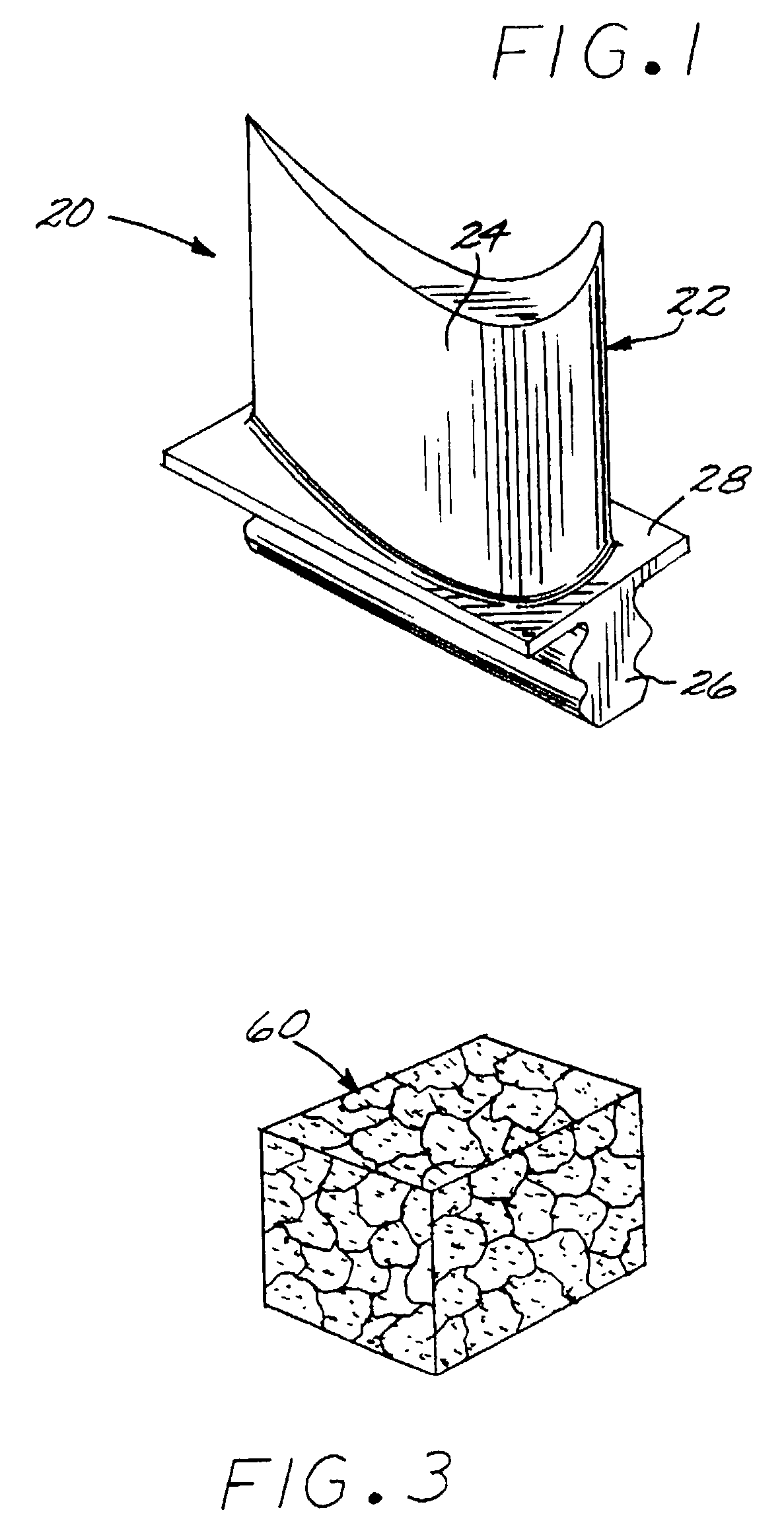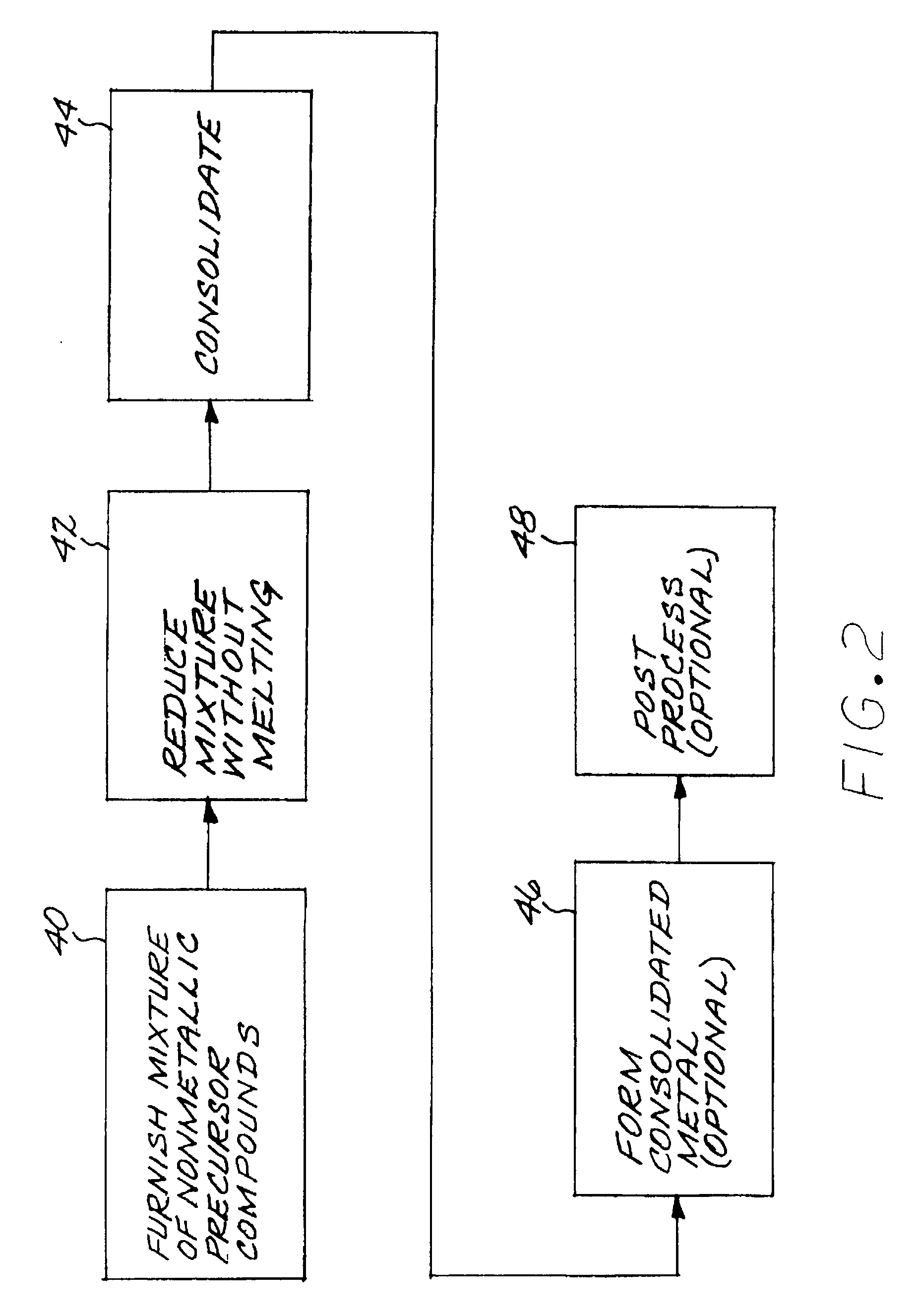Method for fabricating a metallic article without any melting
a technology of metallic articles and fabrication methods, applied in the direction of coatings, etc., can solve the problems of imposing fundamental limitations on the properties of final metallic articles, unable to overcome fundamental limitations, and only at great expense, so as to improve inspectionability, reduce noise level, and improve the effect of inspection quality
- Summary
- Abstract
- Description
- Claims
- Application Information
AI Technical Summary
Benefits of technology
Problems solved by technology
Method used
Image
Examples
Embodiment Construction
[0023]The present approach may be used to make a wide variety of metallic articles 20. An example of interest is a gas turbine compressor blade 22 illustrated in FIG. 1. The compressor blade 22 includes an airfoil 24, an attachment 26 that is used to attach the structure to a compressor disk (not shown), and a platform 28 between the airfoil 24 and the attachment 26. The compressor blade 22 is only one example of the types of articles 20 that may be fabricated by the present approach. Some other examples include other gas turbine parts such as fan blades, fan disks, compressor disks, turbine blades, turbine disks, bearings, blisks, cases, and shafts, automobile parts, biomedical articles, and structural members such as airframe parts. There is no known limitation on the types of articles that may be made by this approach.
[0024]FIG. 2 illustrates a preferred approach for practicing the invention. The metallic article 20 is fabricated by first furnishing a mixture of nonmetallic precu...
PUM
| Property | Measurement | Unit |
|---|---|---|
| porosity | aaaaa | aaaaa |
| grain size | aaaaa | aaaaa |
| grain size | aaaaa | aaaaa |
Abstract
Description
Claims
Application Information
 Login to View More
Login to View More - R&D
- Intellectual Property
- Life Sciences
- Materials
- Tech Scout
- Unparalleled Data Quality
- Higher Quality Content
- 60% Fewer Hallucinations
Browse by: Latest US Patents, China's latest patents, Technical Efficacy Thesaurus, Application Domain, Technology Topic, Popular Technical Reports.
© 2025 PatSnap. All rights reserved.Legal|Privacy policy|Modern Slavery Act Transparency Statement|Sitemap|About US| Contact US: help@patsnap.com


